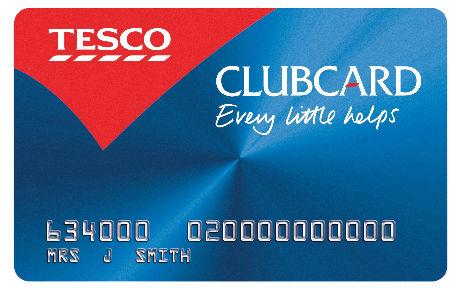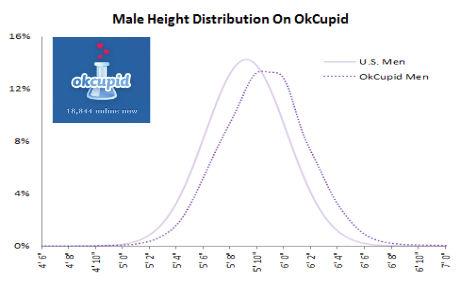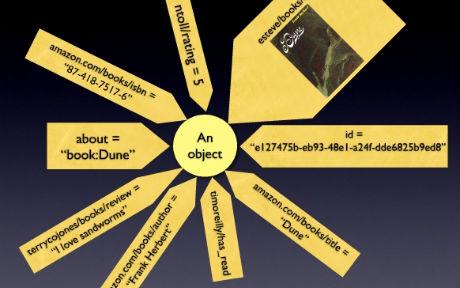How Information Changes Our Lives, 10 Examples
- Transfer

Social London, project by Anil Bawa-Cavia, from University College London.
The availability of a large number of completely new data types is fundamentally changing the way we live. Below are 10 examples of using new information that changes everything from how we evaluate the war, right down to the ways of delivering milk.
Trade
Supermarkets have always monitored how shoppers shop, but in the past few years, the amount and type of information collected has increased dramatically. Tesco owns most of the shares in Dunnhumby Ltd, a data mining and information analysis company, for a large number of trading companies, including: Coca-Cola, BT, Mars, Vodafone, and other leading brands. Dunnhumby uses information gathered through Tesco Clubcard in her work, thanks to her Tesco can predict when people will go shopping, how they will pay for their purchases and even the number of calories they are going to consume.
Dunnhumby recently reported a 32 percent increase in operating profit to £ 53.4 million. The number of employees increased from 300 when the company started in 2007 to 1250 this year. The information Dunnhumby collects has changed how we shop.

Relationships
. OkCupid.com dating site regularly posts articles on its blog., with the analysis of data belonging to users of the site (3.5 million active users). By collecting information from profiles and messages, it’s quite possible to calculate anything from the perfect avatar (it turns out that the best photos for the profile are taken on a high-end camera, in the middle of the afternoon, without a flash), up to the language that you use in the answer on messages ("your" is better than "ur", and sexy is worse than charming). The data also suggests that users lie about their growth, adding 5 centimeters, and increase their salaries by 20 percent. The large volumes of databases that I have dating sites attract scientists , so in the future, the advice we receive on such sites will be based on a lot of processed information.

US male growth, abscissa growth.
Delivery of goods.
In the past few years, advanced routing tools have allowed courier companies to use a variety of data to increase their efficiency. Previously, company delivery plans were planned in small groups and drafted on paper. Now for this, electronic maps, route data, and traffic information, which comes in real time, are used. MapMechanics produces several of these products., the company's customers use them to deliver a wide variety of products, from Yellow Pages to milk. Delivery companies now operate using very sophisticated, real-time updating systems built on data that was not available or limited in number for the delivery planner.
Maps
The way people found stores can also change, thanks to a new approach to existing databases. From the moment Google introduced Street View, which was 3 years ago, competitors have created their own versions of this service. Bing Streetside was used by a team of developers to create Street Slide. Street Slide uses data from Streetside and creates a business stream with logos and building numbers. This is a different, intuitive look at the shopping street and it can change the way we use such services.
Education
LA Times published an articlebased on new data, which changed the idea of how urban schools are rated. Until recently, parents used the average grade for school tests to evaluate the quality of the school that interested parents more than the quality of education. The LA Times used test data from 600,000 students from 2002 to 2009, so they were able to track student progress over the course of their studies. This analysis showed that some schools improved the performance of their students, to a greater extent compared to more prestigious schools. Despite the fact that the analysis methodology is put to the question , this is a great example of how new, previously unused information changes the perception of established judgments.
Politics
The amount of government spending data posted online has grown thanks to the COINS project , plus local administration spending data above £ 500 . Several projects have appeared that help to understand in more detail how the government spends money: Where Does My Money Go ?, OpenlyLocal and Armchair Auditor . and despite the fact that at the moment they use a relatively small amount of information, they have achieved quite a lot. This is not an exaggeration, WDMMG? set a very serious goal, to monitor where taxes are spent, up to the last penny. London Datastore and Data.gov.ukAgitate and emphasize the importance of open information about government actions. The government itself is going to upload a large amount of information to the network. With the growing amount of information about how our government works, pressure on it is inevitable with a view to making changes for the better.
Society
The availability of information about the location of people allowed us to create a number of new geo-social networks and geo-services, such as: Foursquare, Gowalla, Google Latitude. With Facebook Places, location data can be made available to 400 million people. Graduate student Anil Bawa-Cavia from University College London's Center for Spatial Analysiscreated some amazing maps of London using geo-data. Recently, he published several maps created using information from Foursquare, thus creating a map of social London (the very first picture). Data shows that Shoreditch, London Fields and Covent Garden are the most popular places to spend time. This information describes the Foursquare user better than the phrase “regular Londoner.” But Facebook Places will change the existing idea of everything. Bawa-Cavia believes that data from Foursquare can help us understand how the social life of a city is related to its structure and space. By analyzing geo-social databases, we can understand how to create a more social, more convenient city.
War
Wikileaks War Diarythe most detailed war database ever posted online. Without considering the criticism of the data ( and the motivation of those who uploaded ), the information contained in the report consists of records of civilian deaths, increased attacks on coalition forces by the Taliban and links between Pakistan and the Taliban. Showing the futility of war, more convincing than decades of reporting from the war.
Advertising
Not a single story about how information changes people's lives can be told without mentioning Google. Unlike other examples above, Google works with data whose size is measured in Petabytes, where traditional methods of organizing data do not work. Google is based on mathematical models and the constant input of additional data (which is constantly growing) in order to increase revenue and its success. As Chris Anderson wrote in Wired magazine two years ago: “Google is conquering the world of advertising using only applied mathematics. He does not want to know everything about the culture and customs of the advertising world. It just assumes that the best information along with the best tools for analysis will lead to success. And Google was right. ”
Related data and the world of the future
The examples of data types mentioned in the article are innovative, exciting, they change our life. Most of the information we use in everyday life is “dumb” or unrelated. The next stage is “related information”, or information that is able to communicate with each other. In England, Tim Berners-Lee and his team, who created Data.gov.uk, want to create a database of related information with government data. By providing access to related information that was generated by the government, users will have the opportunity to combine various types of data to create new ways of understanding how the government and the world work.
FluidDB startup created by Terry Jones using Tim O'Reilly ,Esther Dyson and others. Attempts to use information using other methods. FluidDB wants to create a “described world” where real objects have virtual copies that can be updated and which everyone has access to through the network. That is, tweets and status updates containing objects, such as the brand of toothpaste or the Eiffel Tower , will contribute to the creation of a common database. The possibilities for interaction are endless.

PS All links lead to English-language sites.
